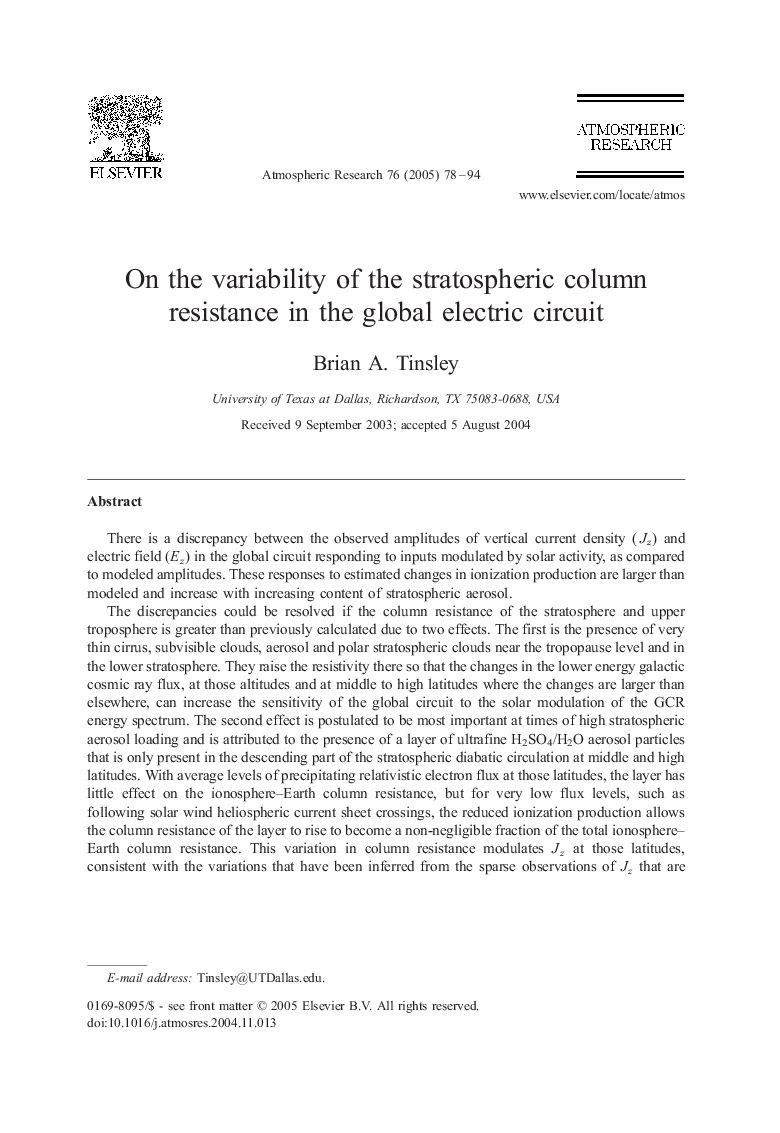| Article ID | Journal | Published Year | Pages | File Type |
|---|---|---|---|---|
| 9459790 | Atmospheric Research | 2005 | 17 Pages |
Abstract
The discrepancies could be resolved if the column resistance of the stratosphere and upper troposphere is greater than previously calculated due to two effects. The first is the presence of very thin cirrus, subvisible clouds, aerosol and polar stratospheric clouds near the tropopause level and in the lower stratosphere. They raise the resistivity there so that the changes in the lower energy galactic cosmic ray flux, at those altitudes and at middle to high latitudes where the changes are larger than elsewhere, can increase the sensitivity of the global circuit to the solar modulation of the GCR energy spectrum. The second effect is postulated to be most important at times of high stratospheric aerosol loading and is attributed to the presence of a layer of ultrafine H2SO4/H2O aerosol particles that is only present in the descending part of the stratospheric diabatic circulation at middle and high latitudes. With average levels of precipitating relativistic electron flux at those latitudes, the layer has little effect on the ionosphere-Earth column resistance, but for very low flux levels, such as following solar wind heliospheric current sheet crossings, the reduced ionization production allows the column resistance of the layer to rise to become a non-negligible fraction of the total ionosphere-Earth column resistance. This variation in column resistance modulates Jz at those latitudes, consistent with the variations that have been inferred from the sparse observations of Jz that are available and from observations of other phenomena thought to be causes and effects of the Jz variations.
Related Topics
Physical Sciences and Engineering
Earth and Planetary Sciences
Atmospheric Science
Authors
Brian A. Tinsley,
